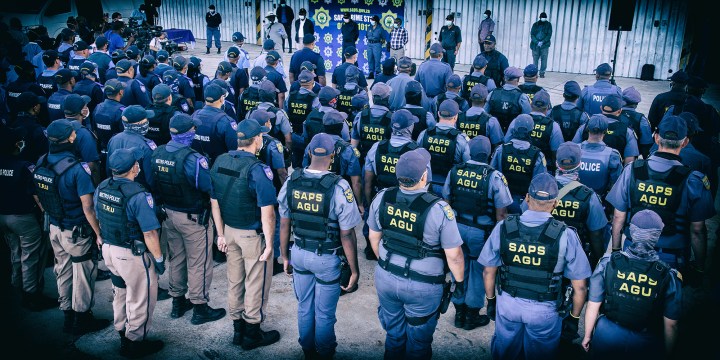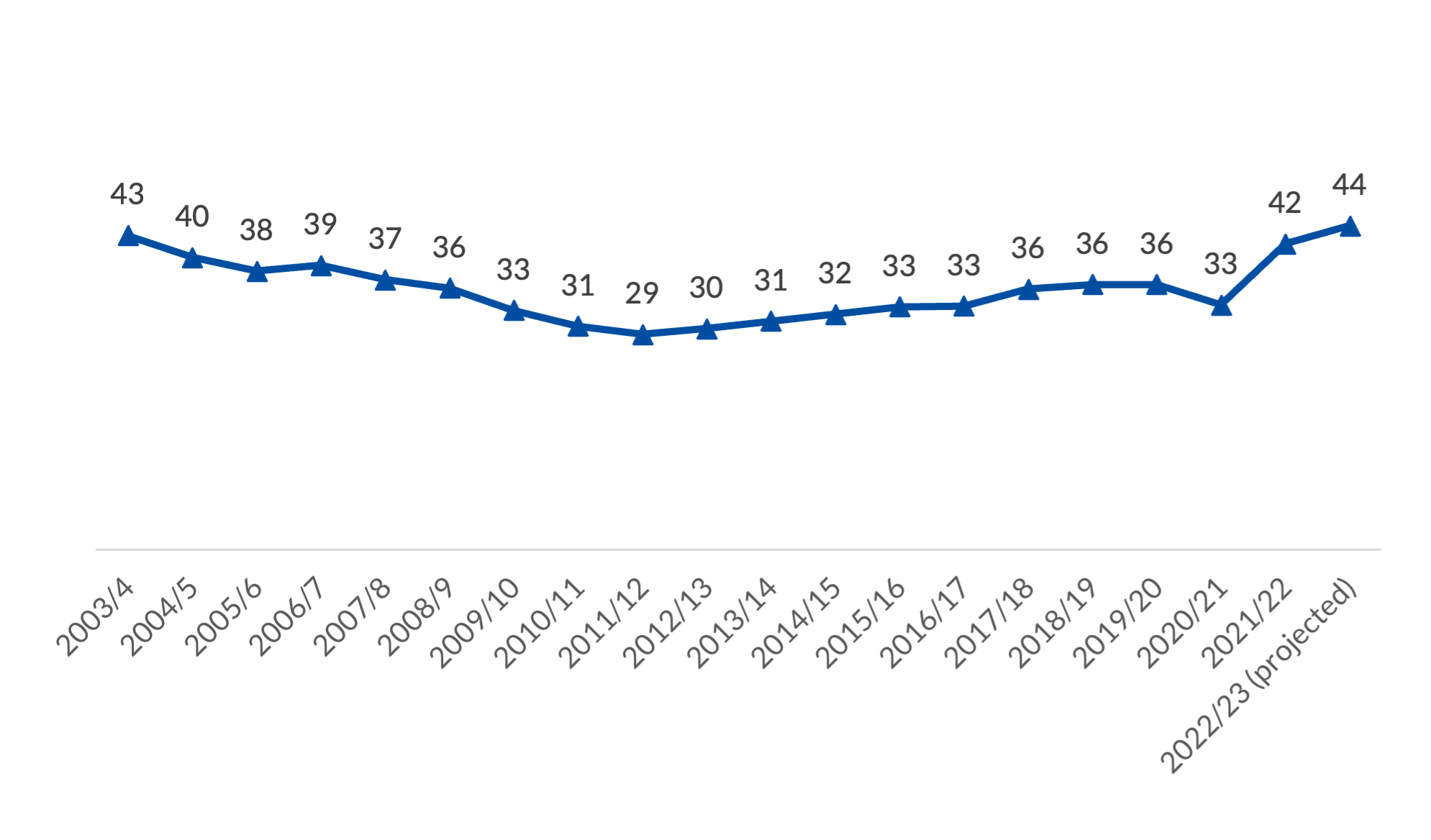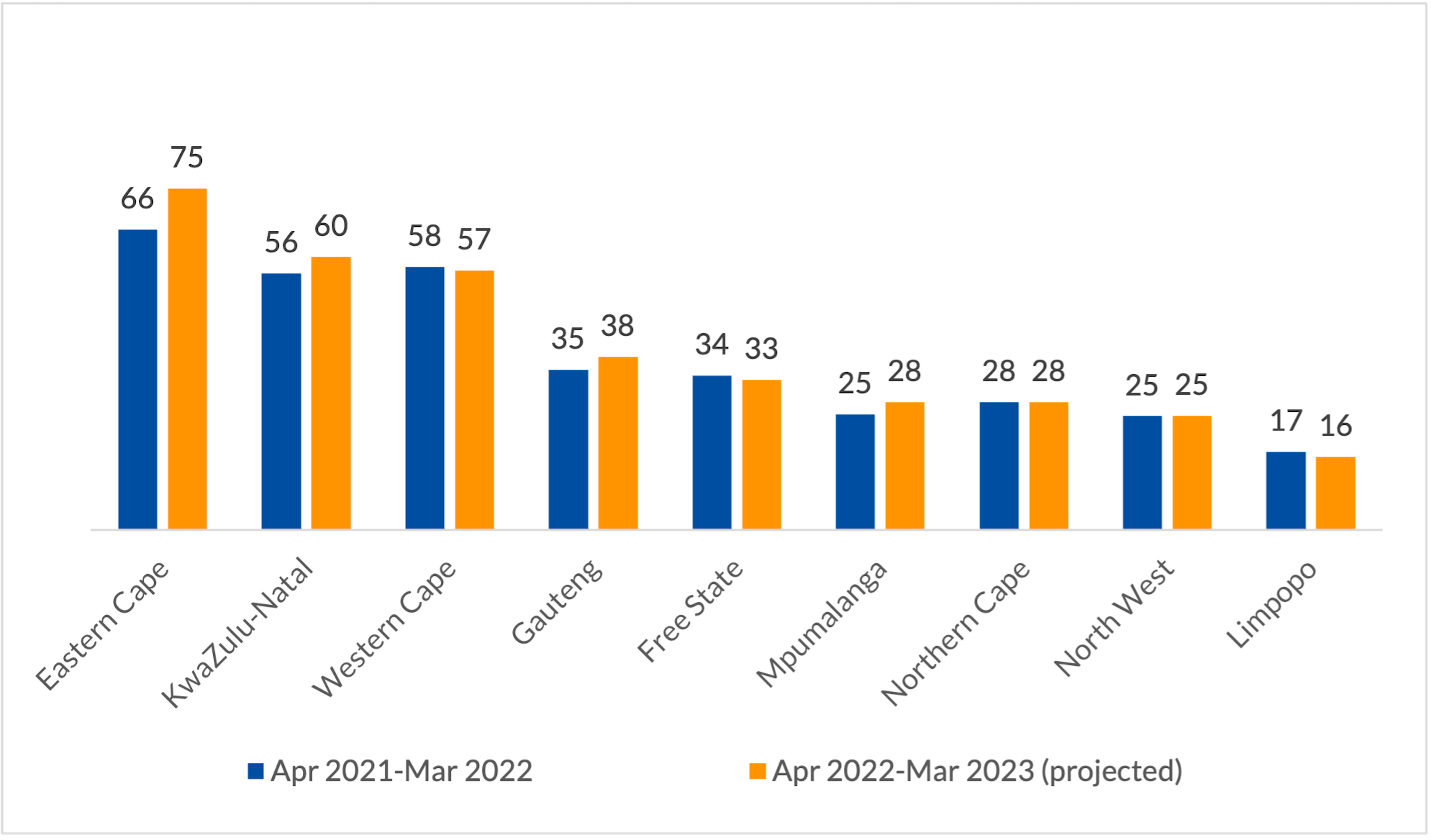ISS TODAY OP-ED
SONA 2023 – SA’s soaring murder rate underscores need for Ramaphosa to ensure better leadership in policing

Crime data analysis should play a much bigger role in policing and safety in South Africa.
Recent official crime statistics show that murder rates in South Africa are soaring, reinforcing concerns about the government’s leadership in addressing the problem.
For the South African Police Service (SAPS) to effectively deal with these and other crimes requires the strategic use of police resources. And that, in turn, depends on government leaders calling for better use of crime data by the police.
As citizens await President Cyril Ramaphosa’s State of the Nation Address today, the big question is whether his much-anticipated cabinet reshuffle will make them any safer or impact policing in any way. Since his election in 2018, there have been few signs that Ramaphosa takes the spiralling murder rate seriously. Nor has he acknowledged the crisis in the SAPS, illustrated by the 55% drop since 2012 in the police’s ability to solve murders.
Murder has increased by 62% from a low of 15,554 deaths in 2011/12 to 25,181 in 2021/22. The 2021/22 per capita rate of 42 murders per 100,000 was the highest since 2003/4 when the rate was 43 (Chart 1).
Annualised projections based on SAPS statistics for April to September 2022 indicate that the 2022/23 annual murder rate may be over 44 murders per 100,000 people (Chart 1). That means South Africa has one of the highest murder rates in the world, at least for countries that are not at war and for which reliable data is available.

Chart 1: South Africa’s national murder rate per 100,000 people. (Source: ISS, SAPS statistics)
 This trend is driven by large increases in specific provinces (Chart 2). The Eastern Cape has suffered high murder rates for years. The annualised projection for the province in 2022/23 is 75 murders per 100,000 – again making it the murder capital of South Africa.
This trend is driven by large increases in specific provinces (Chart 2). The Eastern Cape has suffered high murder rates for years. The annualised projection for the province in 2022/23 is 75 murders per 100,000 – again making it the murder capital of South Africa.
There has also been a dramatic increase in KwaZulu-Natal. Murder there decreased slightly in 2020/21 to 4,825 cases, but surged by 35% in 2021/22 to 6,495, raising the provincial rate to 56 deaths per 100,000. Only about 180 of these new incidents were directly linked to the widespread July 2021 riots and unrest, indicating that other factors are driving the increase.
KwaZulu-Natal’s murder rate is projected to continue upward, reaching 60 per 100,000, confirming an overall shift in the province’s murder patterns. More than 10% of victims here die in incidents where multiple fatalities are recorded.
Trends are not uniform across the country. In the Northern Cape and Free State, per capita murder rates declined over the past decade, while in Gauteng the rate rose in tandem with the 40% growth in the province’s population. Even so, the increase in the number of murders per capita in Gauteng has been lower than in Eastern Cape, KwaZulu-Natal and Western Cape.
Visit Daily Maverick’s home page for more news, analysis and investigations
Per capita rises in Eastern Cape and KwaZulu-Natal have been greatest in the past few years. The Western Cape has been different. From 2011 to 2016, murder increased by 44%. After that, the pace slowed, and the projected per capita murder rate of 57 in 2022/23 is a marginal decline from the previous year.
It is broadly agreed that crime and violence have many social and other determinants, often beyond the police’s control. However, good policing can bring down murder and other notable crimes such as robbery. But declines in the SAPS budget mean that existing police resources must be used better.
International good practice emphasises that considered analysis of crime information can significantly enhance the police’s ability to reduce crime. Crime pattern analysis is done at some SAPS police stations, but there’s little overall provincial or regional trend analysis that is required to allocate police resources effectively.
Neither government nor the SAPS has invested in understanding the high and rising murder rates. For 20 years, authorities have repeated the refrain about violence being linked to people known to each other. Rather than focusing on how to tackle the problem, this often seems intended to absolve government of responsibility.
The SAPS routinely reports on crime trends using a virtually identical template. Little attention has been given to deepening police understanding of crime or strengthening capacity to analyse crime and organisational data. Police Minister Bheki Cele and police leaders show little concern for these deficiencies, which stymies the efforts of those officers who wish to use the data better.
There is also no clear indication that purposeful steps are being taken to strengthen crime intelligence or detective services. These two SAPS components are vital to addressing crime.
There are many examples of remarkable service by individual police officers and units. But the SAPS lacks effective strategic leadership. One example is the poor appreciation for the role that information can play in improving policing. Unless the leadership demands better analysis of the crime situation and organisational performance, such insights are unlikely to be provided. And without that, murder rates will probably rise further.
The coming days present a critical opportunity for Ramaphosa to renew leadership across government. He needs to ensure that SAPS receives a better calibre of political leadership capable of confronting South Africa’s crime crisis. DM
David Bruce, Independent Researcher and Institute for Security Studies (ISS) Consultant.
Research for this article was funded by the Hanns Seidel Foundation.
First published by ISS Today.


















 Become an Insider
Become an Insider
Comments - Please login in order to comment.